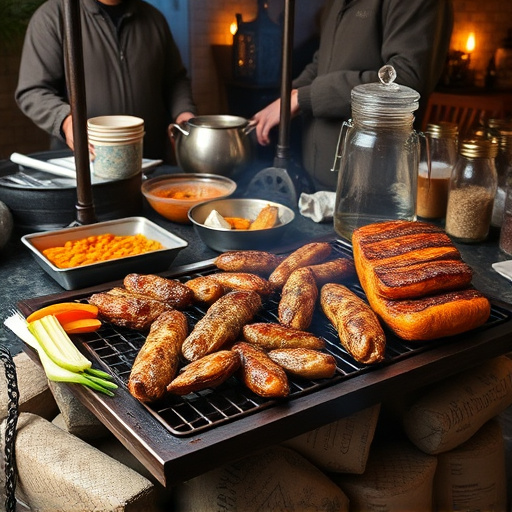Selecting the ideal cut of ribs (baby back or spare) is crucial for a successful BBQ rib recipe. Dry brining (2-4 days) with salt and spices enhances tenderness and flavor. Use a blend of vinegar, brown sugar, paprika, garlic powder for marinade. Slow cook at low temps to break down collagen, season with dry rub. Grill ribs with tongs, applying salt, pepper, BBQ sauce for a caramelized glaze. Accompany with crispy coleslaw, baked beans, corn on the cob, and potatoes or salads for balance. Reheat in oven (350°F/175°C) loosely covered or on stovetop. Personalize with sweet or spicy marinades, wood chips, creative sides, and garnishes.
Discover the secret to mouthwatering BBQ ribs with a sweet finish! This comprehensive guide takes you on a journey from selecting the perfect cut of ribs to mastering the art of slow cooking and grilling. Learn the power of dry brining for maximum flavor infusion, then create your own marinade-sauce blend that will tantalize taste buds. Accompany your masterpiece with side dishes, reheat leftovers, and explore endless customization options for this classic BBQ rib recipe.
- Selecting the Perfect Ribs: Choosing Your Cut
- Dry Brining: A Key Step for Flavor Infusion
- Marinade and Sauce: The Sweet BBQ Blend
- Slow-Cooking Techniques for Tender Results
- Mastering the Grill: Sealing in the Flavors
- Serving Suggestions: Accompanying Side Dishes
- Tips for Reheating Leftovers
- Variations and Customization Ideas
Selecting the Perfect Ribs: Choosing Your Cut
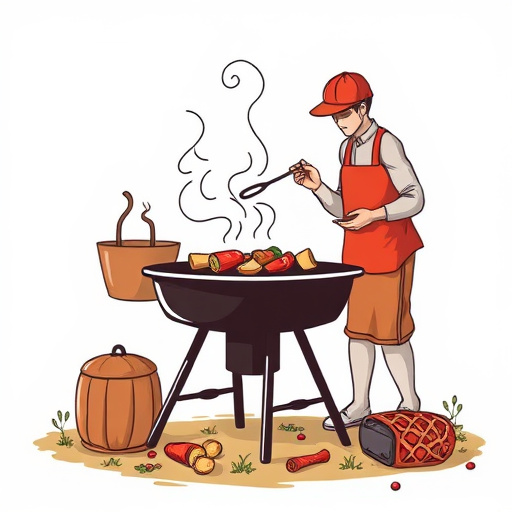
When it comes to selecting the perfect ribs for your BBQ rib recipe, choosing the right cut is essential for a tender and flavorful result. Look for ribs that are meaty with visible marbling—this ensures each bite is packed with flavor. The most popular cuts include baby back and spare ribs; both offer a balance of meat and bone, ideal for slow-cooking methods like smoking or braising.
Baby back ribs, with their smaller size and less bone structure, cook faster and are easier to maneuver on the grill or smoker. Spare ribs, on the other hand, are larger and have more bone and fat, resulting in a richer, more intense BBQ rib recipe. Consider your cooking method and desired tenderness when deciding between these two classic cuts.
Dry Brining: A Key Step for Flavor Infusion
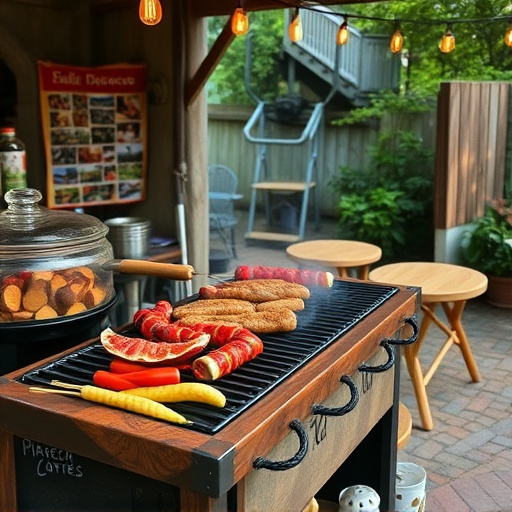
Dry brining is a crucial step in crafting tender and flavorful BBQ ribs, especially for those who seek a sweet barbecue finish. This ancient method involves curing meat by packing it tightly with salt and other spices, drawing out moisture and infusing the ribs with profound savory notes. By removing surface moisture, the dry brine allows for better meat-to-smoke contact during cooking, resulting in incredibly tender, juicy ribs.
In a BBQ rib recipe, the dry brining process typically takes 2-4 days depending on your preference. During this time, salt and spices penetrate the meat, enhancing its natural flavors. After brining, rinse off the salt mixture, apply your favorite rub, and let the ribs rest before firing up the grill. This technique ensures that every bite of your mouthwatering BBQ rib dish is packed with depth and complexity.
Marinade and Sauce: The Sweet BBQ Blend
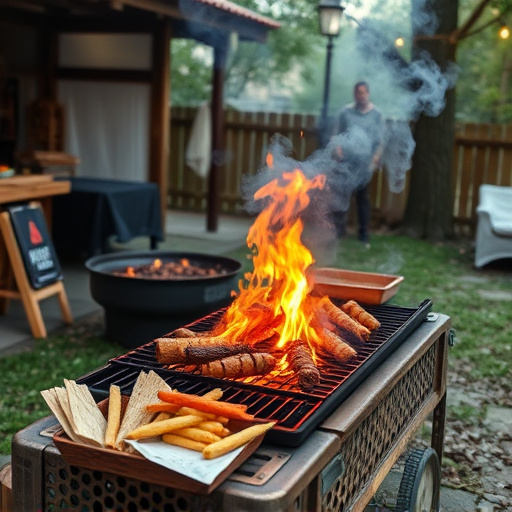
The key to achieving tender, mouth-watering BBQ ribs lies in the perfect blend of marinade and sauce. For a sweet BBQ rib recipe, a harmonious combination of tangy vinegar, sugary brown sugar, and aromatic spices like paprika and garlic powder forms the base. This initial marinade infuses the ribs with flavor, breaking down some of the muscle fibers and making them incredibly tender.
Once cooked, a generous coating of barbecue sauce is essential. A sweet BBQ sauce made with ketchup, mustard, and a hint of chili adds depth and a glossy finish. Balancing sweetness with heat results in a rich, complex flavor profile that coats each rib perfectly. The sauce not only enhances the taste but also creates a delectable crust, making these ribs a true delight for any barbecue enthusiast.
Slow-Cooking Techniques for Tender Results
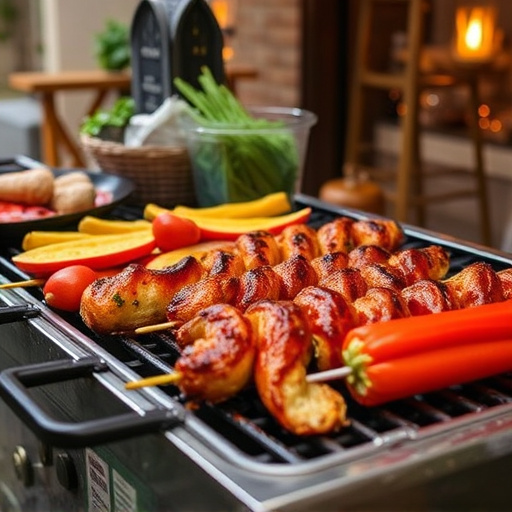
Achieving tender ribs with a sweet barbecue finish often starts with understanding the power of slow-cooking techniques. This method allows the collagen in the meat to break down gradually, resulting in incredibly soft and juicy ribs. Using a slow cooker or oven at low temperatures for an extended period ensures that the ribs cook evenly, locking in flavors from the tenderizing process.
For optimal results with your BBQ rib recipe, consider using dry rub spices beforehand. Applying a generous coating of this blend—typically including ingredients like brown sugar, paprika, garlic powder, and salt—enhances both flavor and browning when cooked slowly. This step, combined with slow-cooking, creates a mouthwatering contrast between the tender meat and the crispy, caramelized exterior.
Mastering the Grill: Sealing in the Flavors
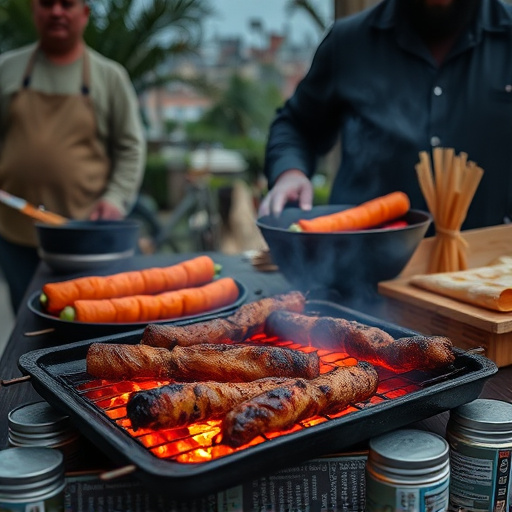
Mastering the grill is key to achieving tender, mouthwatering BBQ ribs. The initial step involves preheating your grill to create a two-zone cooking environment—a hot zone for searing and a cooler zone for slow-cooking. This technique ensures that the ribs develop a delicious crust while remaining incredibly tender. When grilling ribs, it’s essential to avoid over-handling them; instead, use long tongs to flip them occasionally, allowing the natural juices to seal in the flavors. A simple marinade or rub of salt, pepper, and your favorite BBQ spices can add depth of flavor. For a sweet barbecue finish, consider adding a brush of BBQ sauce during the last few minutes of grilling—this will caramelize slightly, creating a delightful glaze.
Serving Suggestions: Accompanying Side Dishes
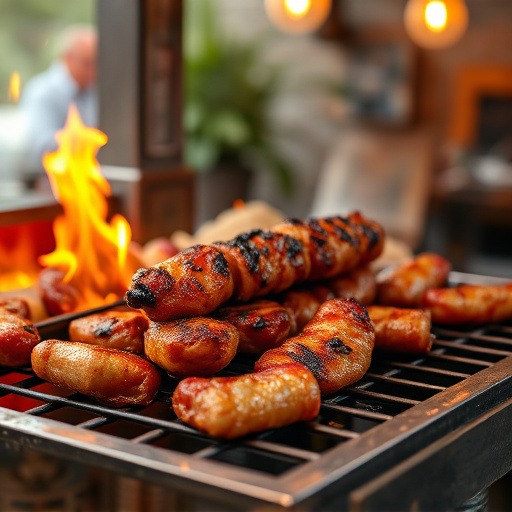
When serving these mouthwatering BBQ ribs, consider pairing them with complementary side dishes that enhance the sweet and savory profile. A classic combination is crispy coleslaw, offering a refreshing crunch and balance to the rich rib meat. For an extra touch of flavor, add some baked beans – they not only provide a hearty texture but also complement the barbecue sauce’s sweetness. Corn on the cob is another excellent choice, grilled or boiled, to bring a touch of summer to the table. Potatoes, whether roasted, mashed, or fried, are always a popular side, offering a starchy contrast to the tender ribs.
For a more complete meal, incorporate a fresh salad with a light vinaigrette dressing, ensuring the flavors don’t overpower the ribs. The BBQ rib recipe’s sweetness can also be showcased by offering a simple fruit salad, using seasonal fruits for a vibrant and healthy addition. These side dishes will not only satisfy various tastes but also ensure every bite is an explosion of flavors, making your BBQ rib serving suggestions a memorable dining experience.
Tips for Reheating Leftovers
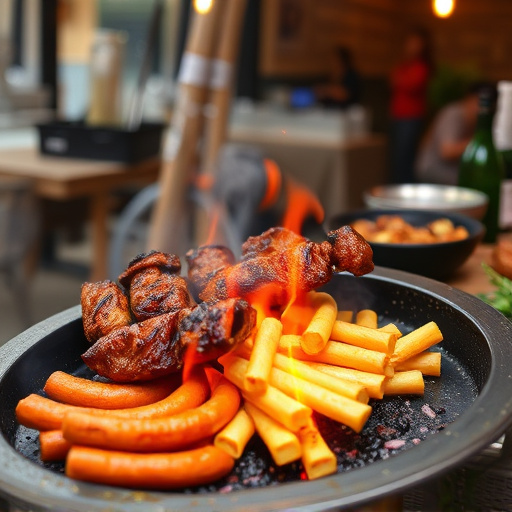
Reheating leftovers is a breeze with these simple tips, ensuring your BBQ rib recipe stays mouthwatering every time. For the best results, warm your ribs gradually in a preheated oven at around 350°F (175°C). Place them on a baking sheet, cover loosely with foil, and heat for about 20 minutes per pound. This method retains moisture and prevents overcooking.
Avoid microwaving, as it can dry out the ribs. If you’re in a hurry, consider reheating them on the stovetop over low heat, stirring occasionally to prevent burning or sticking. Remember, when reheating BBQ ribs, the goal is to maintain that perfect balance of tender meat and sweet barbecue sauce.
Variations and Customization Ideas
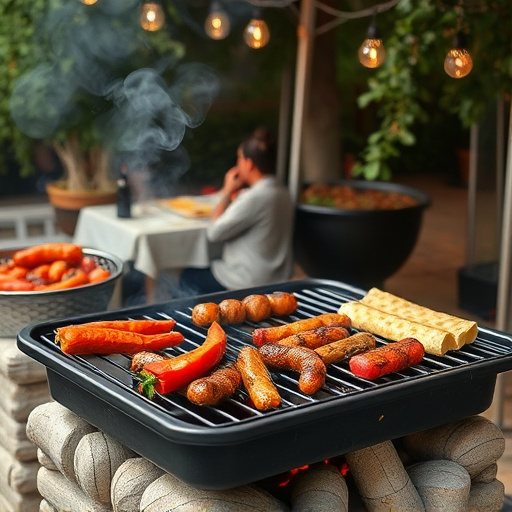
When it comes to BBQ rib recipes, variations are endless and customization is key. You can experiment with different marinades and sauces to suit your taste preferences. For a sweeter finish, add a touch of honey or maple syrup to your barbecue sauce; for a spicier kick, incorporate chili powder or cayenne pepper.
Consider using various types of wood chips or chunks during the smoking process to impart unique flavors. Apple, cherry, or hickory woods are popular choices, each offering distinct aromas that complement the ribs beautifully. Additionally, don’t be afraid to play around with side dishes and garnishes, such as coleslaw, grilled vegetables, or a refreshing fruit salad, to create a well-rounded dining experience.
